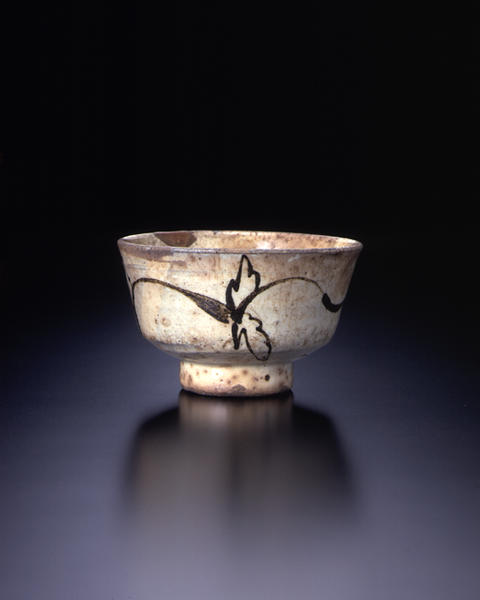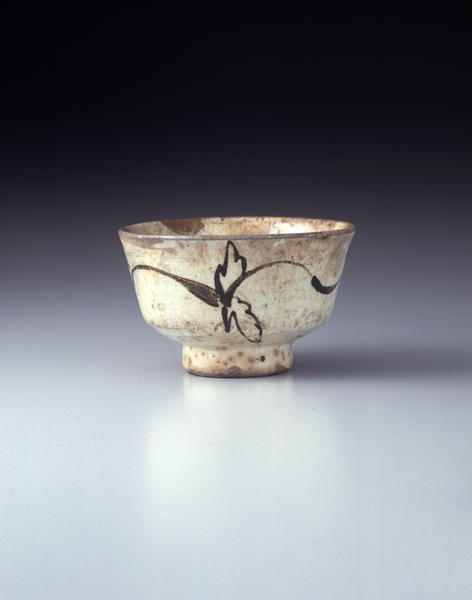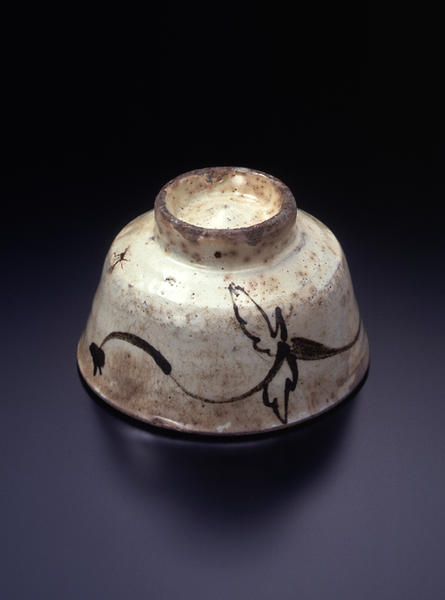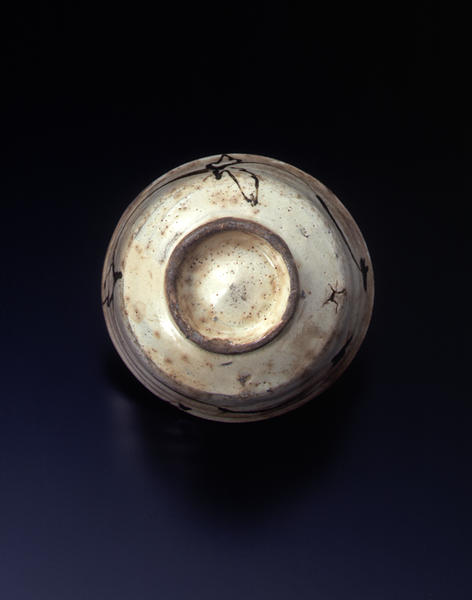絵粉引草花文盃
- 朝鮮王朝時代
- 15-16c
- 粉青沙器
- H-5.5 D-9
解説(春の玉手箱)
一四世紀から約五〇〇年の長期にわたって存続した李氏朝鮮王朝(李朝)。その李朝前期を代表する陶磁器が粉青沙器で、日本では俗に三島、刷毛目、鶏龍山などと呼ばれている。前代の高麗青磁の技法をそのまま受け継ぎ、施文によって象嵌、印花、白地、粉引の四タイプに大分できる。
粉引は粉吹とも書き、白釉が粉を吹いたように見えるところからその名がある。鉄分を多く含んだ灰褐色の胎土に、白釉(白泥)をずぶ掛けし、中でも鉄絵具で文様を描いたものは絵粉引といって珍重する。本作の器面二箇所には手慣れた筆致で伸び伸びと草花文が施され、見込底部には沈線が一条巡らされている。高台畳付には目跡が五箇所確認できる。艶のある釉調、全体に生じた浸み(雨漏り)は、杯として程よい大きさであるためか、長年掌の中で使い込まれてきたことを物語っており、小さいながらも味わい深いものとなっている。
Catalogue Entry
The Yi dynasty ruled the Korean peninsula for approximately 500 years beginning in the 14th century. Punch`ng ware was the representative ceramic ware of the early Yi dynasty, and in Japan these wares are usually called Mishima, Hakeme and Keiryuzan types. These potters inherited the techniques of the preceding dynasty's Korai celadons and their products can be generally divided into four types on the basis of their decorative types, namely, inlaid, stamped motif, white ground, and "kohiki."
The "kohiki" designation literally means "powder blown," or "powder pulled," depending on the characters used, and the name derives from the powdery look to the white glaze. The body clay of these works is an iron rich grayish brown in color which is then coated with a white glaze or slip. The rarest form of this ware is known as e‐kohiki which are decorated with iron underglaze designs. This bowl is decorated with sinuously drawn grass and flower motifs on two faces of the sides of the bowl, while the bottom of the interior of the bowl is circled by a single sunken line. The base of the foot shows five traces of kiln furnishings. The glossy glaze is mottled overall with patina, maybe brought on by its frequent use due its convenient size. This patina tells the tale of the many years of this bowl's use, and depth of its expressiveness belies its small stature.



